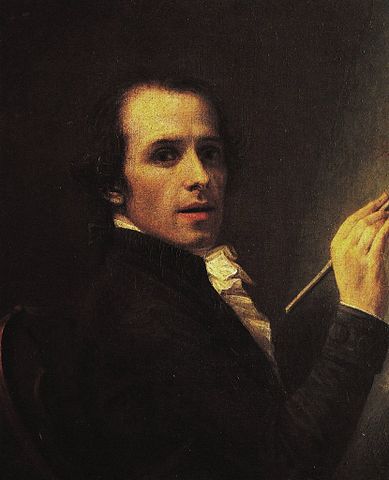Antonio Canova: The Supreme Minister of Beauty

By Antonio Canova - http://www.historia-del-arte.net/Links-ARTE/Concurso/Ganador2000.htm, Public Domain, Link
Sculpting the elegant, graceful, coyly erotic, and smooth-surfaced marble statues of mythological and literary figures, and thus craving a niche in the world of neoclassical art, the Italian sculptor, Antonio Canova, is highly acclaimed as one of the greatest exponents of Neoclassicism and the most brilliant sculptor in Europe in the late 18th and early 19th centuries.
Revered as ‘the supreme minister of beauty', Canova was born on November 1, 1757, in Possagno, a small village in the Republic of Venice. Belonging to a family of stone-cutters, he began learning the principles of drawing from his grandfather at an early age. In his grandfather’s studio, he quickly discovered a talent for sculpture and carved several marble works before his teenage years.
Under the protection of a Venetian senator, Canova, at the age of 11, went to work with the sculptor Giuseppe Bernardi (also called Torretti), an eminent sculptor at the time. He studied under Torretti for two years before moving to Venice to continue studying at the age of fifteen. He helped Torretti, executed a few humble commissions on his own, and studied classical art and drew from the nude.
In 1775, Canova set up his own studio in Venice. In 1779, he sculpted his first important work, “Daedalus” and “Icarus” which had been commissioned by Pisani, procurator of the Venetian republic. Canova's early works displayed elements of both Baroque art and Rococo art.
Visiting Rome in 1779 and 1780, Canova reached a turning point in his style. There he met the leading artists of the period, including the Scottish painter-dealer Gavin Hamilton, who directed Canova's studies toward a more profound understanding of the antique. He also visited Naples and the ancient archeological sites of Herculaneum, Pompeii, and Paestum.
Canova returned briefly to Venice, but in 1781 he was again in Rome, where he was to spend the most of his remaining life. Becoming an influential figure in the artistic life of the city, he willingly helped the young artists and find them patrons. In 1783, he received an important commission for the tomb of Pope Clement XIV in the Roman church of SS. Apostoli. In 1787, he was commissioned to execute a tomb in St. Peter's to Pope Clement XIII. Subsequent tombs were increasingly Neoclassical and combined restrained with sentiment, akin to the work of John Flaxman.
After the French invasion of Rome in 1798, Canova moved to north and worked in Vienna on a funerary monument to Maria Christina in the Augustinerkirche. In 1802, he spent some time in Paris working on the bust of Napoleon, and in 1806 Joseph Bonaparte commissioned an equestrian statue of Napoleon. In 1808, he finished his most famous work “Venus Victrix”. In 1811, he completed two nude statues of Emperor Napoleon.
In 1805, Canova was appointed the inspector general of fine arts and antiquities of papal state. In 1810, he was made president of the Academia di S. Luca in Rome. From 1812-1816, he sculpted his well known “Three Graces”. Important in the development of the Neoclassical style, Canova's domination on European sculpture is reflected in countless adulations in memoirs, poems and newspapers.
At the age of 64, Canova died on October 13, 1822, in Venice.
References:
www.metmuseum.org/toah/hd/nova/hd_nova.html
www.visual-arts-cork.com/sculpture/antonio-canova.html
www.getty.edu/art/collection/artists/357/antonio-canova-italian1757-1822
www.Britannica.com/biography/Antonio-Canova-marchese-dlschia
www.biography.yourdictionary.com/antonio-canova
www.theguardian.com/artanddesign/jonathanjonesblog/2010/Aug/24/antonio-canova-sculptures
www.encyclopedia.com/people/literatur-and-arts/european-art-1600-present-biographies/antonio-canova
www.artsy.net/artist/antonio-canova
https://en.m.wikipedia.org/wiki/Antonio_Canova
www.dailyartfixx.com/resources/artistbirthdays
